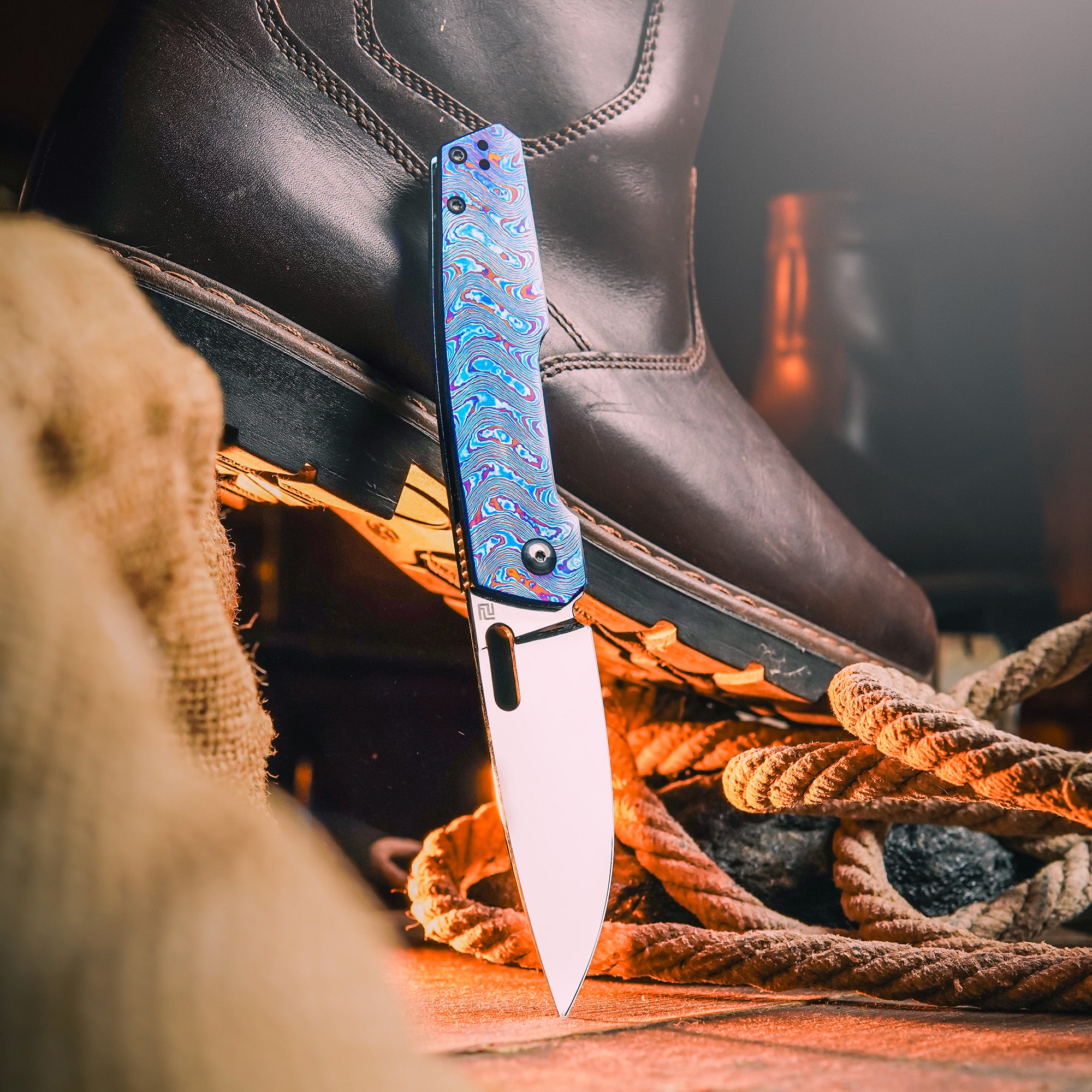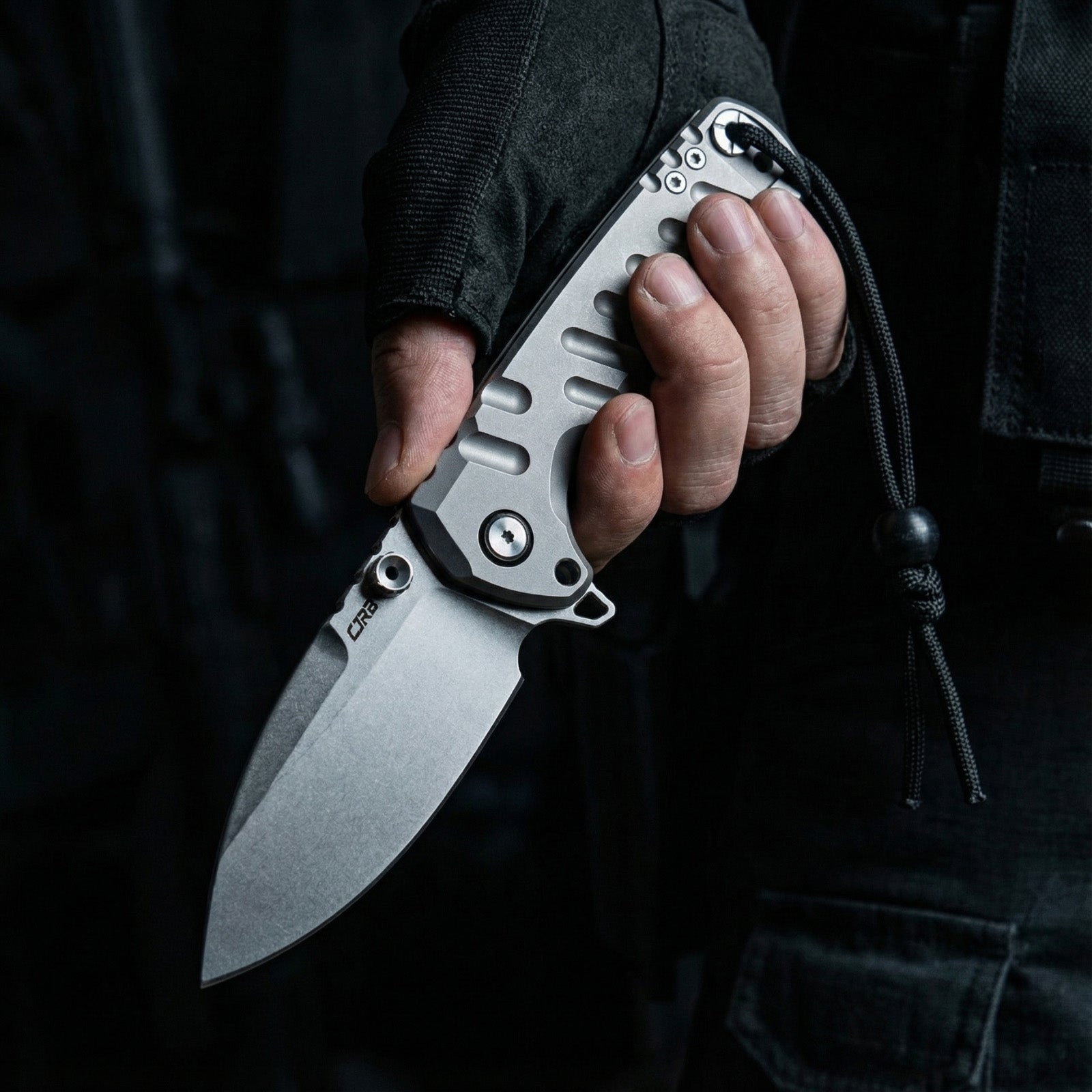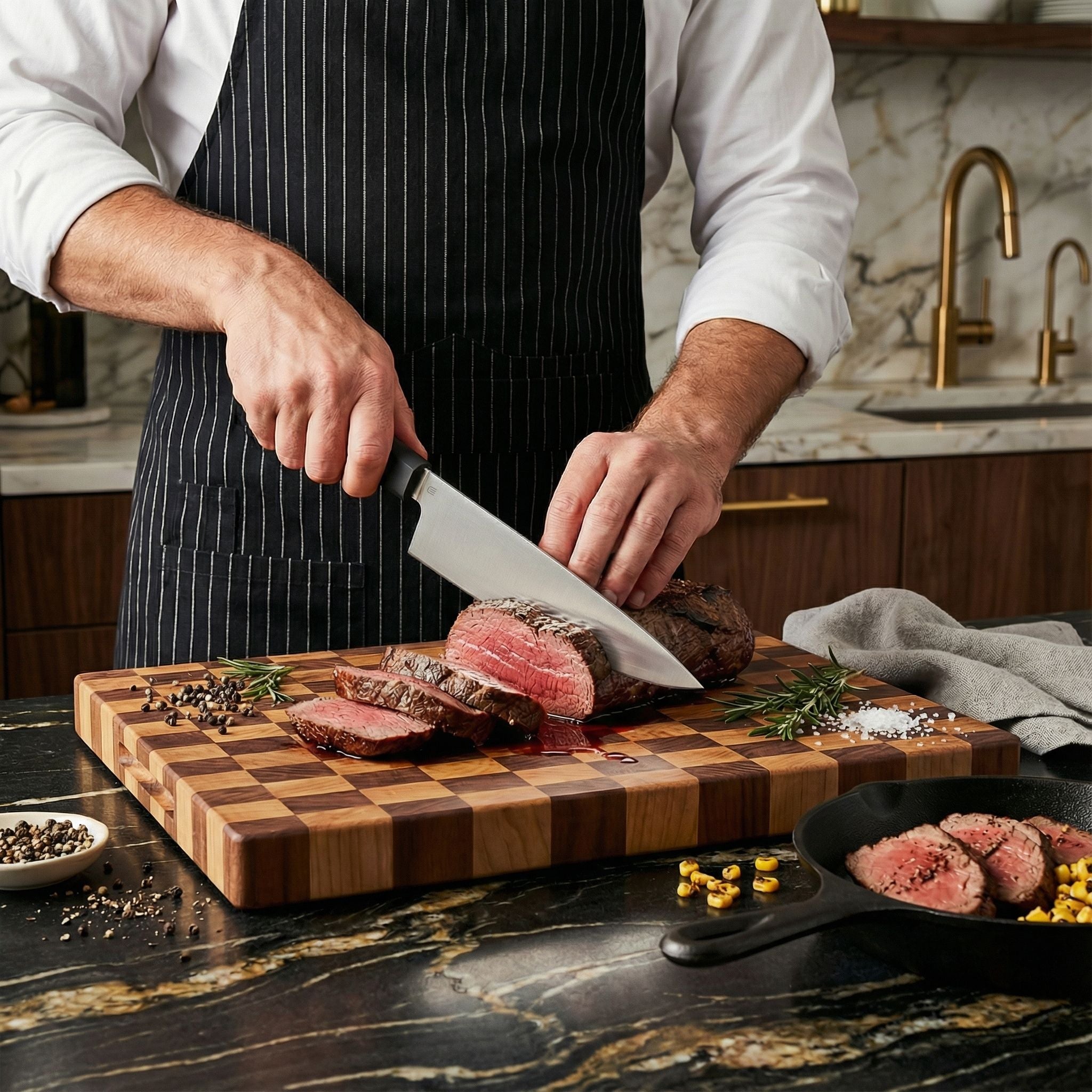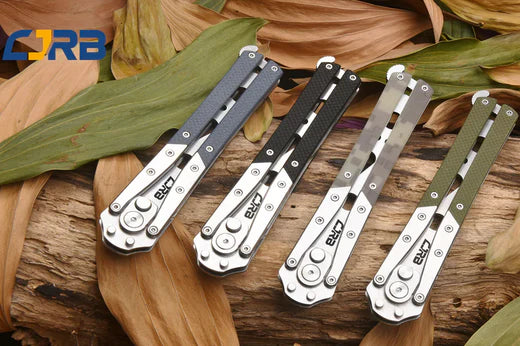Folding knives have become an essential part of a hiker's gear as they are versatile and relatively easy to transport. Whether you want to prepare kindling, cut food, repair broken gear, or provide first aid, a good folding knife will really help you out. But with all the different locking mechanisms available today, it takes time to select the right one for hiking. Below, we explore the different types of locks that work well for hiking and share some tips on usage safety as a way to help you make the right choice according to your hiking style.
Common Hiking Tasks Requiring a Folding Knife
Hiking often involves many instances that require access to a practical knife at hand. Here are some common tasks that hikers do in an outdoor environment that require the use of a folding knife:
Preparing Kindling and Firewood
A folding knife would be perfect for gathering and preparing kindling. With its sharp blade, one will surely be able to slice down small branches or shave off wood shavings, so that you have ample fuel to start and maintain a fire.
Food Preparation
Whether setting up camp for the night or simply taking a day jaunt through the trails, having a knife on hand can be crucial to preparing food. Be it slicing up fruits and vegetables or opening packaged goods, a strong folding knife helps you prepare your meal safely and confidently.
Gear Repairs and Adjustments
Accidents always tend to happen outside, and gears always break or need adjustments at the wrong time. A folding knife can help make quick repairs, from cutting rope to modifying straps to even removing splinters from skin.
First Aid Applications
During an emergency, a folding knife is good for cutting bandages, making splints out of sticks, or opening a package of medical supplies. While it is not a substitute for a first-aid kit, it will be of vital help if rescue takes longer to arrive.

Folding Lock Mechanisms Suited for Hiking Conditions
When choosing a folding knife for hiking, the locking mechanism is key to how well it performs. There are several types of locks used in folding knives, and each one has its own pros and cons.
| Lock Type | Description | Advantages | Disadvantages |
| Liner Lock | A metal liner inside the handle secures the blade. |
- Simple one-handed operation - Lightweight - Easy to clean |
- Hard to unlock with gloves - May wear down over time |
| Frame Lock | Uses part of the handle to secure the blade. |
- Very durable - Less likely to close accidentally |
- Heavier - Can be difficult to operate with one hand |
| Back Lock | A spring-loaded bar at the back engages the blade. |
- Very secure - Good in dirty conditions |
- Requires two hands to close - Bulkier design |
| Compression Lock | Combines features of liner and back locks. |
- Easily operated with one hand - Highly secure and versatile |
- More complex - Usually more expensive |
| Slip Joint | Holds blade in place through friction, not a true lock. |
- Extremely lightweight - Legal in many places |
- Lacks safety; can close unexpectedly - Not suitable for heavy tasks |
Hiking Conditions' Requirements for Locking Mechanisms
- Weather-Resistant: As you are likely to encounter various weather conditions while on a hike, it's important to select a knife that is resistant to rain, humidity, and extreme temperatures, and the locks shouldn't be susceptible to jamming or rust.
- Mechanism Working Well with Gloves: Many hikers wear gloves for warmth or protection. A locking mechanism that can easily be worked with gloved hands ensures practicality while not sacrificing during use.
- Locks That Resist Dirt and Debris: Outdoor environments are either dusty or muddy. With time, dirt will slowly build up in moving parts. A design that reduces entry of debris will increase the reliability and usability of the knife.
- Durability and Reliability in Outdoor Conditions: The locking mechanism should be strong enough to handle the challenges of outdoor usage. It needs to be robust against impact, torsion, and heavy pressure without failing when you need it the most.
Choose the Right Lock Based on Your Hiking Style
Besides making sure the locking mechanisms satisfy the hiking conditions, your hiking style also plays an important role. Common factors are as follows:
Day Hikers vs. Long-Distance Backpackers
Day hikers may prefer light weight and comfort, therefore tending to select less complicated locking systems, such as liner locks or slip joints. A long-distance backpacker may lean more toward durability and functionality, such as frame locks or back locks.
Frequency of Use
If you're going to use your knife a lot on the hike, look for a lock that's easy to operate with one hand. This is so much more convenient while you're multitasking. Most often, you will not use your knife all that frequently, so you might not really need the most complex or heavy-duty locking mechanism; a simple design will be enough.
Pack Weight and Size
A minimalist knife with a lighter locking type, such as a liner lock or slip joint would be more suitable if you want to minimize the weight of your pack. But if you desire durability and don't mind carrying a little more weight, a frame or back lock can be a better choice for your gear.
Familiarity and Skill Level
Being a beginner to using folding knives, perhaps your best options might be a liner lock or slip joint, as opening and closing them requires less complicated maneuvers. Simplicity breeds confidence and assures you that on the hiking trails, you really do not need to fumble with the knife.

Safety Considerations for Hikers When Using a Folding Knife
While hiking, carrying a folding knife might be quite helpful, but safety should always come first.
Proper Handling Techniques
Proper handling techniques include holding the knife firmly with a proper grip and not placing your fingers anywhere near the cutting edge when using it. Cut in a direction away from yourself and others. Wherever possible, close a knife by using two hands. This helps you retain control of the knife while reducing the chances of self-cutting when trying to disengage the lock. Always keep your fingers out of the path of the blade when closing a knife.
Check Lock Functionality
First thing before use, most importantly, is to ensure the locking mechanism is fully engaged. A knife that does not lock properly may accidentally close and thus can injure you. You are also supposed to periodically test the lock during your hike, especially after heavy and extensive use, or in extreme cases, very harsh weather conditions.
Watch Out for Your Surroundings
Make sure nobody is standing too close to you when working with a knife. This prevents any accidental cuts to others. And also watch your footing, especially on uneven surfaces. A slip while using a knife could result in serious injury.
Store Properly
When not in use, safely store your knife in a sheath or clip it securely onto your pack to avoid any accidental exposure and, therefore, keep yourself safe while moving. Avoid loose pockets that your knife might shift in or fall out.
Select the Right Folding Knife Locking Mechanism!
It's necessary for hikers to select the appropriate folding knife with a suitable locking mechanism. Considering your style of hiking, the environment in which you will be, and the lock mechanisms that suit your needs, you can choose a knife that will enrich your outdoor time while keeping you safe and secure on the trail!










Leave a comment
All comments are moderated before being published.
This site is protected by hCaptcha and the hCaptcha Privacy Policy and Terms of Service apply.